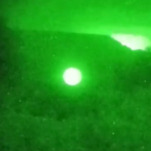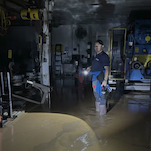The mean things critics wrote about Gwen Stefani in 1996
Today, Gwen Stefani is a household name. She’s sung several number one hits. Two nights a week, her face is on primetime television in front of millions of viewers as one of the coaches on The Voice. Hell, the woman made spelling “banana” a cultural moment.
But Stefani didn’t make her mark on the music world immediately. She’s been performing since 1986, when she joined a band in her home town of Anaheim called No Doubt. It wasn’t until 1996 (a full decade later) that the band had their first number one hit, “Just a Girl,” off of their third album, Tragic Kingdom. Only then did No Doubt become mainstream enough for widespread publicity, and Stefani herself began to take the spotlight; she went on to release her first solo album in 2004.
What did critics think of the ska girl turned pop princess in the beginning of her career? Here are some of the earliest mentions of Gwen Stefani I could dig up in a LexisNexis search:
The New York Times, December 1996
The first reference to Stefani in the New York Times comes in 1996, immediately after the release of Tragic Kingdom, and at the beginning of No Doubt’s tour. After seeing the band perform, Jon Pareles wrote an article titled “Girls will be Girls, and So Will Their Fans,” touching on how No Doubt appealed to the teenage sensibilities of its audience. He was the first music critic for a national publication to center his show’s review entirely on Stefani’s performance:
-

-

-

-

-

-

-

-

-

-

-

-

-

-

-

-

-

-

-

-

-

-

-

-

-

-

-

-

-

-

-

-

-

-

-

-

-

-

-

-

-

-

-

-

-

-

-

-

-

-

-

-

-

-

-

-

-

-

-

-

-

-

-

-

-

-

-

-

-

-

-

-

-

-

-

-

-

-

-

-

-

-

-

-

-

-

-

-

-

-

-

-

-

-

-

-

-

-

-

-

-

-

-

-

-

-

-

-












































































































